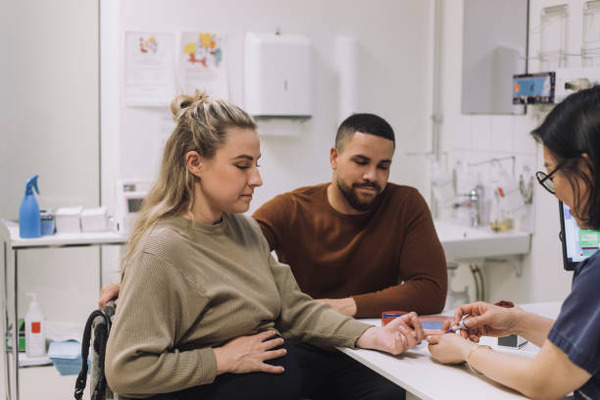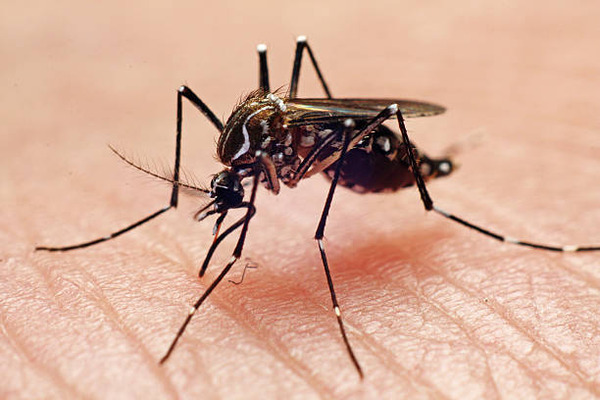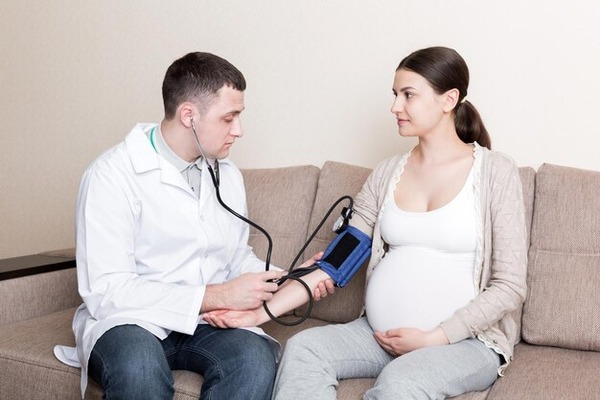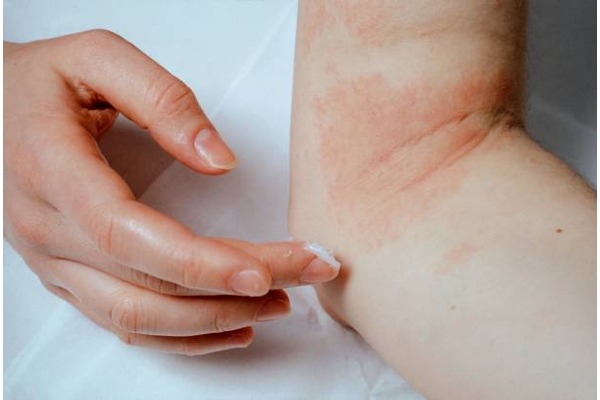
WHAT IS CHICKEN POX AND ITS OVERVIEW?
INTRODUCTION:
Chicken pox, caused by the varicella-zoster virus, manifests as an itchy rash with blister-like lesions. This infection is highly contagious, but its prevalence has significantly decreased due to the availability of a vaccine. While children are more susceptible, adults can also contract chicken pox. Typically, the initial manifestation of chickenpox occurs on the face and trunk, encompassing the chest and back. Subsequently, the rash extends to cover the entire body, reaching as far as the fingers and toes.
Before the introduction of the initial chickenpox vaccine in 1995, nearly everyone experienced the illness during childhood. However, since the late 1990s, the incidence of chickenpox has dropped by almost 90%. Nowadays, the majority of children receive the chickenpox vaccine as part of their regular immunization routine.
Once an individual has had chickenpox, there is no risk of contracting it again from another person. Nevertheless, those who are unvaccinated can acquire chickenpox at any age. Adults, in particular, may suffer severe consequences if infected, emphasizing the importance of either experiencing chickenpox during childhood or safeguarding against it through vaccination.
CHICKEN POX STAGES:
The three phases of chickenpox generally pertain to the appearance of the rash:
In Stage 1, the rash is red and bumpy, persisting for a few days. Stage 2 involves a rash with fluid-filled blisters that break open approximately one to two days later. Stage 3 marks the scabbing over of the blisters, continuing for a few days.
Despite the sequential stages, it is possible to have various types of bumps simultaneously. This implies that some bumps may be in the process of forming while others have already broken open. The entire duration of the rash can extend up to approximately 10 days.
WHAT ARE THE SYMPTOMS OF CHICKEN POX?
Chickenpox symptoms are readily observable, often allowing healthcare providers to diagnose the condition by examining the child’s skin. The typical progression of chickenpox symptoms includes:
- Low-grade fever.
- Fatigue.
- Headache.
- Loss of appetite accompanied by a stomachache.
- Development of a highly itchy skin rash resembling numerous small blisters.
- Formation of fluid-filled bumps resembling milky water.
- Scab formation after the blisters rupture.
- Blotchy skin appearance.
- The gradual disappearance of crusty spots.
Children who have received the chickenpox vaccine are generally protected against the infection. However, the vaccine’s effectiveness is not absolute, and some children may experience a “breakthrough” infection despite being vaccinated. Fortunately, such breakthrough infections are typically mild.
HOW DOES CHICKEN POX SPREAD?
Children are susceptible to contracting chickenpox at any age. Following exposure, there is a period of one to three weeks during which your child may seem well before exhibiting symptoms. The virus can be transmitted by infected individuals from one to two days before any signs of illness appear until all the blisters have crusted over or scabbed.
Chickenpox spreads through:
- Direct contact with an individual who has chickenpox.
- Inhaling air contaminated by respiratory droplets when an infected person sneezes or coughs.
- Contact with fluids from the eyes, nose, or mouth of an infected child.
WHAT ARE THE COMPLICATIONS OF CHICKEN POX?
Complications arising from chickenpox are not common but are potential. These may encompass:
- Bacterial infections affect the skin, blood, and soft tissues.
- Encephalitis or Reye’s syndrome.
- Pneumonia.
- Dehydration.
- Disruptions in blood clotting.
- Liver problems.
In the past, when chickenpox was widespread, generally, healthy children experienced mild cases of the illness. However, it’s worth noting that chickenpox can lead to more severe symptoms in adults aged 18 and older.

HOW CHICKEN POX IS DIAGNOSED?
Chickenpox is typically diagnosed based on clinical symptoms and the characteristic rash associated with the virus. A healthcare professional, such as a doctor or nurse, will typically consider the following factors when making a diagnosis:
- Clinical Symptoms: The distinctive symptoms of chicken pox include the appearance of a red, itchy rash that develops into fluid-filled blisters. The rash usually starts on the face and trunk before spreading to other parts of the body. Other common symptoms include fever, headache, fatigue, and loss of appetite.
- Medical History: A healthcare provider may ask about the patient’s medical history, including recent exposure to someone with chickenpox or shingles. The incubation period for chickenpox is usually 10 to 21 days after exposure.
- Physical Examination: A physical examination is often conducted to assess the characteristic appearance of the chickenpox rash and to rule out other possible causes of similar symptoms.
In some cases, especially if the diagnosis is unclear or if there are complications, laboratory tests may be conducted: - Viral Culture: A viral culture involves taking a sample from a blister or the fluid inside a blister and testing it in a laboratory to confirm the presence of the varicella-zoster virus (VZV), which causes chickenpox.
- Polymerase Chain Reaction (PCR) Test: PCR tests can detect the genetic material of the varicella-zoster virus, providing a more rapid and sensitive method of diagnosis.
WHAT IS THE MANAGEMENT OF CHICKEN POX CHILD?
Ensure your child gets ample rest and stays hydrated, as chicken pox typically resolves on its own within a week or two. To alleviate itching, consider the following measures:
- Gently apply a cool, moist cloth to the rash.
- Maintain a cool environment for your child.
- Encourage your child to refrain from scratching, and trim their fingernails to minimize scratching risk.
- Use a lotion containing antihistamines, readily available at the drugstore. If uncertain, seek guidance from the pharmacist.
- Administer over-the-counter antihistamines like diphenhydramine (Benadryl®) or cetirizine (Zyrtec®).
- Provide your child with a daily cool bath or shower, or an oatmeal bath. When drying, pat them gently instead of rubbing them with a towel.
- Ensure your child stays well-hydrated by offering plenty of water and fluids. A soft, bland diet can be beneficial if there are blisters in their mouth.
Management in Adult:
The treatment for adults with chickenpox is similar to that for children, encompassing supportive measures. However, in certain cases, your healthcare provider might suggest antiviral medication. Adults who face an elevated risk of severe symptoms or have specific medical conditions could potentially benefit from antiviral drugs.
In how many days can the chicken pox be cured?
The duration of chicken pox can vary from person to person, but the illness typically lasts about 7 to 10 days.
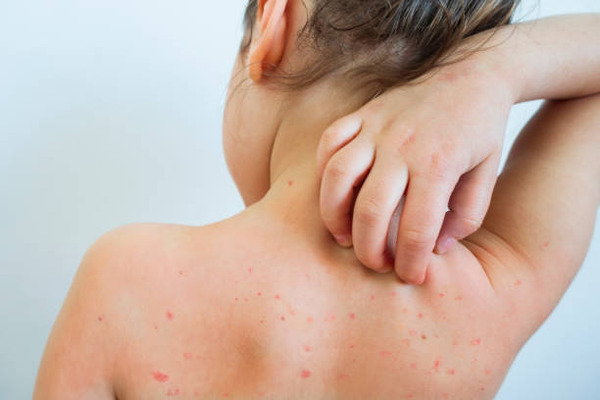
HOW TO PREVENT FROM CHICKENPOX?
There is a vaccine available for chickenpox, administered in two doses by your child’s pediatrician.
For children under the age of 13, the initial dose is recommended between 12 and 15 months, with the second dose administered between 4 and 6 years old. Typically, the chickenpox vaccine is given as part of a combination vaccine known as MMRV, which also guards against measles, mumps, and rubella. However, it can also be administered as a standalone vaccine.
Adults who haven’t experienced chicken pox should also receive the vaccine. For individuals aged 13 and older who haven’t been vaccinated, two doses are recommended, spaced at least 28 days apart.
The vaccination is highly effective, with a success rate of over 90% in preventing chickenpox. Since its introduction in 1995, the vaccine has successfully averted at least 91 million cases of chickenpox.

